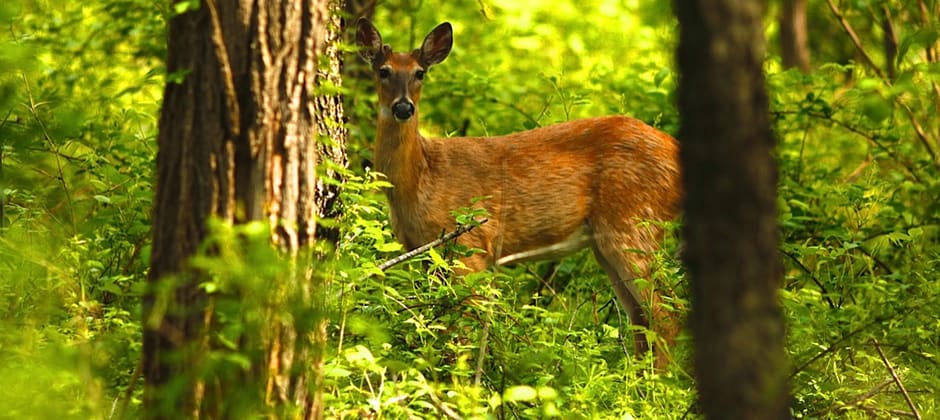Share this article
How can wildlifers deal with ‘forever chemicals’ today?
This article is part of a series focusing on topics addressed in upcoming TWS webinars. Hosted by TWS working groups, the monthly webinars engage wildlife professionals on a host of subjects relevant to their work. Learn more and register here.
People call them “forever chemicals.” They’ve been used to prevent stains in fabric, keep food from sticking to pans, put out fires and for a number of other household and industrial uses. While many of them are no longer manufactured in the U.S., these human-made chemicals don’t break down, and they can accumulate over time. This raises concerns about health effects on humans — and wildlife.
The more scientific name for these chemicals is PFAS — short for per- and polyfluoroalkyl substances. This group of thousands of chemicals represent a growing area of concern for wildlife biologists and managers as they look into how they may affect fish, amphibians, birds and terrestrial wildlife, and how consuming contaminated game meat might affect humans.
In the first of a new TWS webinar series hosted by TWS working groups, panelists will explore these questions, delving into what research has shown and how agencies are responding. Hosted by the Wildlife Toxicology Working Group, the webinar “PFAS contamination: What’s this mean for wildlife management?” is scheduled for Wednesday, May 12, from 3 to 5 p.m. Eastern. The free webinar is open to both TWS members and nonmembers.
“We wanted to have a webinar that is at the level of the wildlife manager,” said Louise Venne, chair of the Wildlife Toxicology Working Group. “What can they do and how can they tackle this emerging threat?”
As a growing body of research points to increasing concerns about harmful effects of contaminants to wildlife, the working group is dealing with not only PFAS but other chemicals, from mercury and lead to PCBs, pesticides and herbicides.
“Most of these contaminants, once they’re in the environment, they’re hard to clean up,” Venne said. “Often, there aren’t quick solutions because of their distribution.”
The working group is made up of more than 60 members dedicated to keeping the issue of contamination in the minds of wildlife biologists and to serve as experts to answer questions and provide resources. “A lot of our members are just interested in contaminants, not necessarily practitioners,” Venne said. Some work for state and federal agencies. Some work for universities Some are veterinarians or disease specialists, and others work in consulting on sites with contamination.
The two-hour webinar will include presentations on recent research and a look at efforts that Wisconsin officials have undertaken to monitor PFAS in a range of species, including deer, bald eagles and fish. Presentations will be followed by a panel discussion and time for questions from participants.
PFAS have been linked with adverse health effects in lab animals, including reproductive, developmental, liver, kidney and immunological effects. That raises concerns for humans, but because these chemicals are often found in bodies of water and elsewhere in the environment, it raises additional concerns for wildlife.
“We wanted to have a webinar that will give the wildlife biologist and manager a general sense of what these things are and some tools in the toolbox,” Venne said.
Header Image:
Wisconsin biologists are sampling white-tailed deer and other species for signs of PFAS.
Credit: Larry Palmer/USFWS








